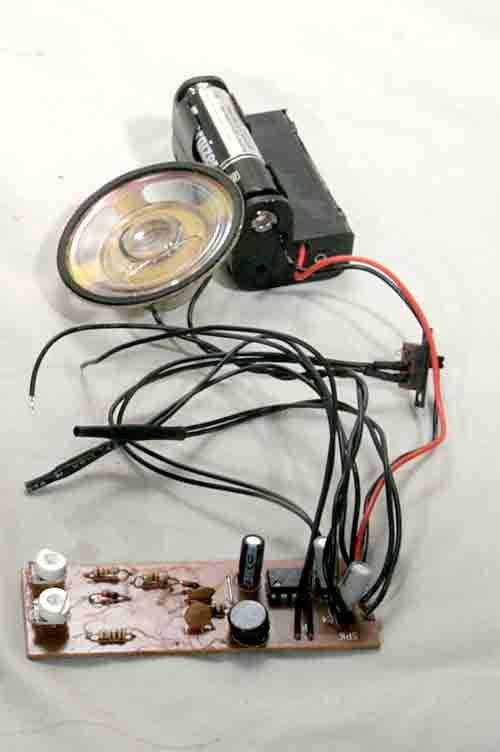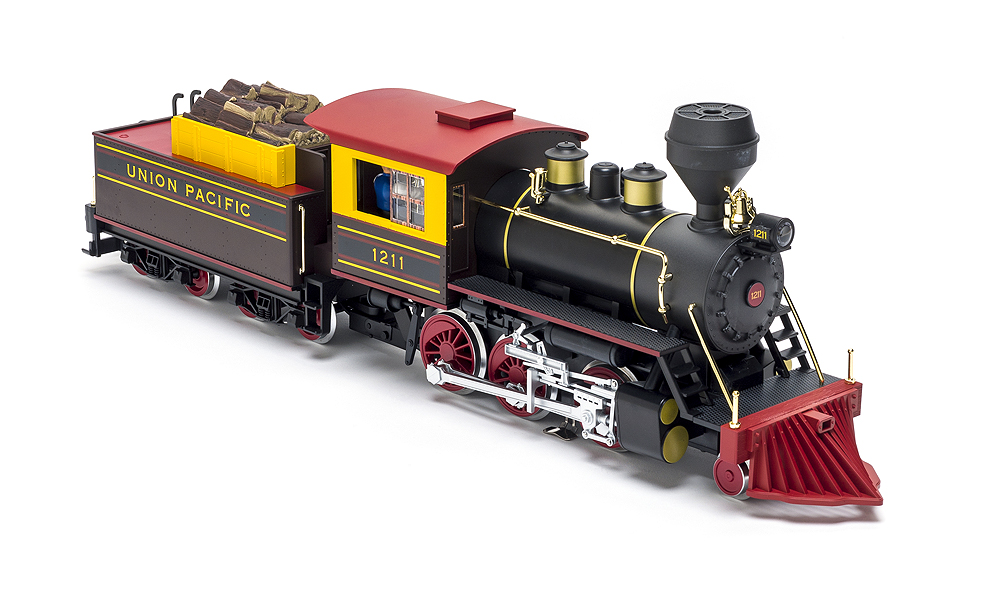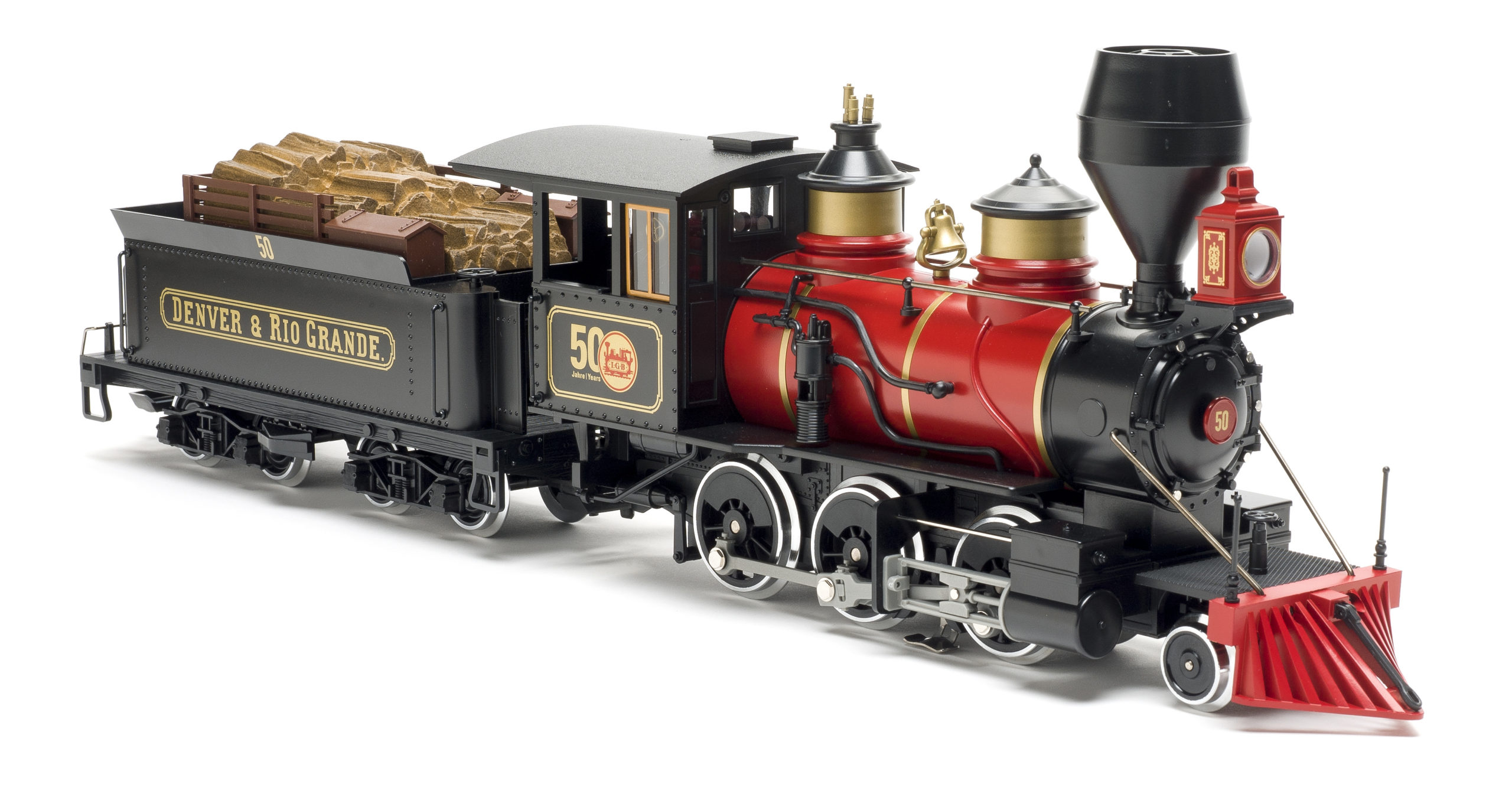Hyde-Out Mountain Live Steam
89060 NNR
Jewett OH 43986
Price: $67.50 (including shipping)
E-mail: Hydeoutmountain@verizon.net
Easy to install, basic steam-locomotive sound
Pros: Very simple operation and installation
Cons: Steam chuff tone rises as track voltage increases; bell has very short duration, must
be triggered additional times for more than four rings
bill well.
The system consists of a small sound board (1″ x 3″), a 1.5″ speaker, a battery pack that holds three AA batteries to power the system, and some magnets to trigger the sounds. Wired to the board are two magnetic reed switches-one for the bell and one for the whistle-and a power switch. On the board are two small potentiometers, one to control the overall volume of the system and one to adjust the rate of chuff in proportion to the track voltage.
I hooked up the system in a Bachmann 0-4-0 Porter, running the reed switches down just in front of the cab (they’re small and black, so they blend in surprisingly well). I wired the track-voltage input leads to the PC board located in the boiler of the locomotive and mounted the speaker in the opening for the speaker (coincidentally, the exact size!). I turned on the track power and took a listen. The background sound is a quiet hiss, as you might expect from a steam locomotive. I triggered the bell, which rang for four “dings” then stopped. If you want it to ring longer, you must trigger it again. Personally, I’d prefer it to ring a bit longer, perhaps three or four seconds, before turning off, but that’s just my preference. The whistle blows for around two seconds, then stops. If you trigger the whistle twice in rapid succession, you can get a shorter duration, as the second trigger stops the one that’s playing.
The quality of the whistle and bell recordings are okay. Coincidentally, it’s the same digital recording that is used in the train clock that hangs in my workshop-which led to a bit of confusion when the clock went off while testing the sound system!
This system is not going to compete with the high-end systems but it’s not intended to. Jerry Hyde says he’ll gladly play you a sound sample over the phone if you’re interested.
The chuff works off of track voltage only. There’s no means to trigger it manually. As the voltage increases, the chuff rate increases. You can adjust the rate of the chuff via an adjustment potentiometer on the board. It’s not perfect but it gets pretty close. One down side is that, in addition to increasing in rate, at slow speeds the chuff is a very low tone, which then increases in pitch with the chuff rate. If you’re using it in a locomotive where you’re always changing the speed (while switching, for instance) you’ll really notice it. On the other hand, if you’re a person who sets the trains running and then lets them go, you’ll likely not care.
One important note-the chuff won’t work properly with pulse-width control, such as that from many on-board R/C controls. It needs a linear-voltage input, which is more common with traditional track power.
The maximum voltage the board can handle is 5V so, if you wanted to use other on-board batteries or track voltage to control the board, you’ll need to limit the voltage via a 5V voltage regulator.
You can use third-party control systems to run the bell and whistle on this board, either by eliminating the magnetic reed switches and wiring the leads directly to the control system or by using magnets on a servo motor to trigger the reed switches. I could see this being done in live-steam locomotives, where the modeler wanted a whistle and bell but didn’t need the chuff.
My feeling is that this system is particularly well suited to installations where the user wants sound for the sake of sound. It’s as simple to install in a boxcar as it is in a locomotive, so it can easily trail behind any steam engine in your fleet. It’s perfect for producing a quiet, pleasing sound to bring just a little extra life to the locomotive.














